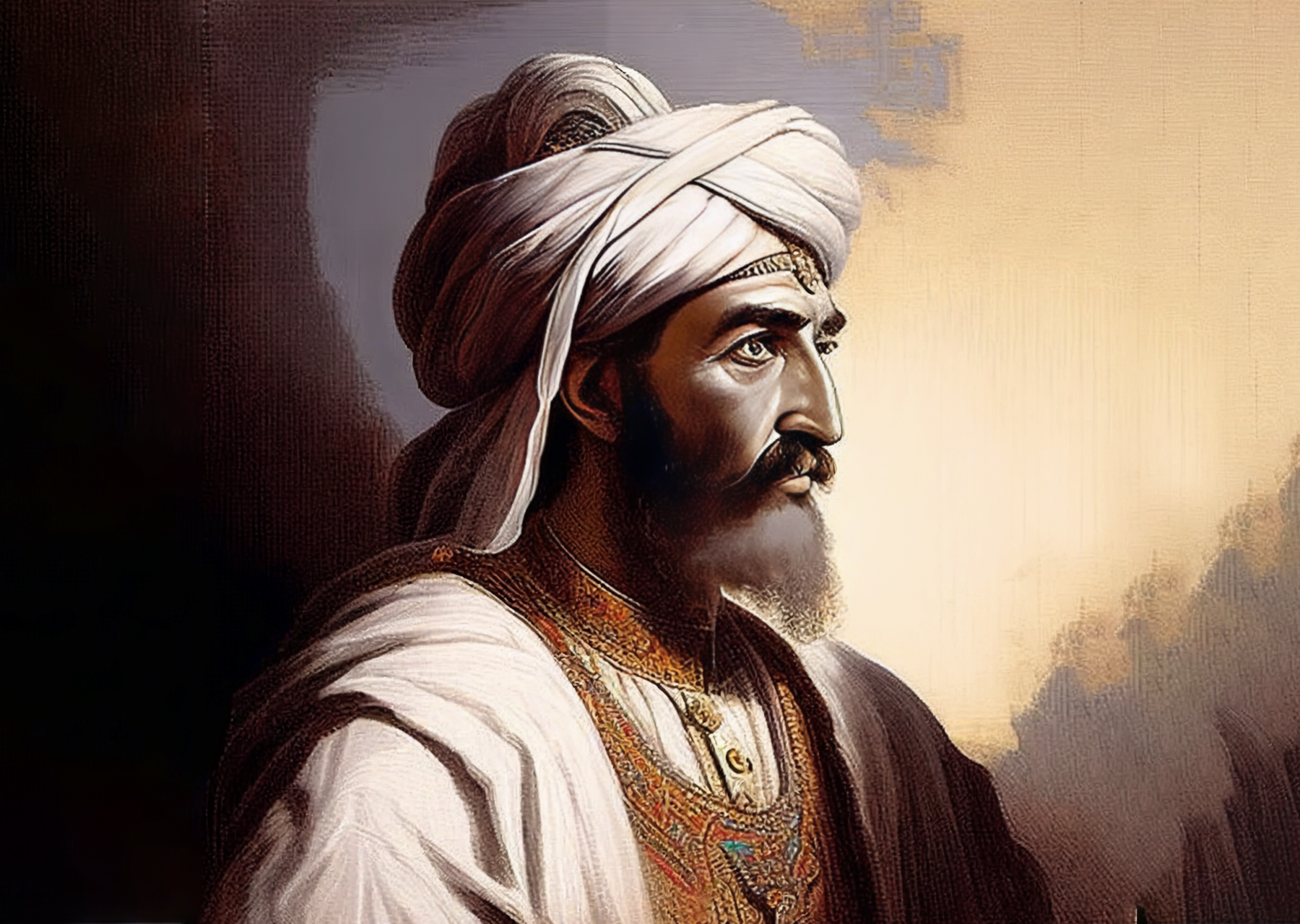Introduction
In the annals of early Islamic history, few figures have left as profound an impact as Abd al-Malik ibn Marwan, the fifth caliph of the Umayyad dynasty. His reign from 685 to 705 CE was a transformative epoch characterized by crucial administrative reforms, groundbreaking architectural projects, and a concerted effort to establish a cohesive cultural identity across a vast and diverse Islamic empire. The period was marked by internal unrest, external threats, and a dynamic process of state-building that laid the groundwork for subsequent generations of Islamic rulers.
Today, the importance of Abd al-Malik’s legacy resonates in the enduring architectural marvels, such as the iconic Dome of the Rock, and in the institutional reforms that standardized governance and religion within the caliphate. His strategic initiatives in monetary policy, language standardization, and legal codification significantly shaped the political and cultural landscapes of the Islamic world. More recently, the wealth of historical data and scholarly research available on this period, accessible through platforms like freesourcelibrary.com, offers a comprehensive understanding of Abd al-Malik’s contributions. Exploring his life, policies, and lasting influence provides valuable insights into the early formation of Islamic civilization, which continues to influence contemporary political and cultural discourses.
Background and Early Life
Birth and Early Origins
Abd al-Malik ibn Marwan was born in the year 646 CE in Medina, a city that served as the spiritual and administrative hub of early Islam. His lineage connected him directly to the Prophet Muhammad’s close companions, as he was descended from the prominent Umayyad clan, which played a pivotal role in the expansion and consolidation of Islamic rule. Growing up in a milieu steeped in religious scholarship and political intrigue, Abd al-Malik was exposed early to the complexities of leadership and governance.
Family and Political Upbringing
His father, Marwan I, was a key figure within the Umayyad dynasty, serving as governor of Medina and later as caliph. From a young age, Abd al-Malik demonstrated qualities of leadership, political acumen, and charismatic authority. These attributes would serve him well in later years as he navigated the turbulent palace politics and external threats that characterized late 7th-century Islamic rule.
Ascension to Power
Context of the Umayyad Caliphate in the Late 7th Century
The transition of power to Abd al-Malik occurred during a period fraught with internal dissent and regional conflicts. The Umayyad Caliphate had experienced its first major civil war, the First Fitna, which had pitted Ali ibn Abi Talib against Muawiya I. Following Muawiya’s death, the caliphate transitioned into a new era marked by factional struggles, rebellion, and ideological disputes involving various sectarian groups, including the Kharijites and the fledgling Shia movement.
Factions and Rivalries Within the Dynasty
Leading up to Abd al-Malik’s rise, the political landscape was complex, with rival factions vying for control of the caliphate. His father, Marwan I, had managed to secure his position through warfare and alliances, and upon his death in 685 CE, Abd al-Malik inherited a fragile realm. His accession was challenged by rival claimants, notably Caliph Abd Allah ibn Zubayr, who controlled parts of the Islamic world independent of the Umayyads for a period. Navigating these conflicts required diplomatic finesse, strategic military campaigns, and deft governance.
Consolidation of Political Power
Legitimization and Securing Authority
Abd al-Malik’s consolidation of power involved significant political maneuvering, including military campaigns to suppress rivals and focus on internal unity. His careful approach to governance was characterized by balancing the ambitions of regional governors and maintaining loyalty within the core Umayyad aristocracy. This process also involved suppressing dissent from factions opposed to Umayyad rule, such as the Shia, who viewed his reign as illegitimate due to his dynasty’s dynastic inheritance.
Reorganization of Governance
To establish a more centralized and effective administration, Abd al-Malik implemented key reforms that would shape the caliphate’s future. Recognizing the importance of uniformity in control and communication, he moved toward standardization in several domains, including language, currency, and legal authority. His governance reforms aimed to narrow the divisions that had previously hindered unified rule over the increasingly vast Islamic territories.
Administrative Reforms Under Abd al-Malik
Language Standardization: Making Arabic the Official Language
One of Abd al-Malik’s most significant reforms was the decision to designate Arabic as the official administrative language of the caliphate. Prior to this, the empire used multiple languages, including Greek, Aramaic, and Persian, for administrative and diplomatic correspondence. This linguistic shift was revolutionary, as it promoted cultural cohesion and facilitated the integration of diverse ethnic groups within the expanding Islamic state.
Legal and Bureaucratic Reforms
Abd al-Malik commissioned the compilation and dissemination of Islamic laws, or Sharia, which provided a legal framework rooted in Quranic revelations and Hadith (sayings and actions of Prophet Muhammad). These legal reforms aimed to establish consistency in judicial proceedings across the empire and to legitimize his authority through divine law.
Moreover, the caliph reformed tax collection procedures, enhancing revenue through reorganization of provincial administration. Taxation was made more systematic and equitable to ensure steady income for military campaigns and state projects, while also reducing corruption among officials.
Economic Policies and Monetary Standardization
Development of a Uniform Islamic Currency
Prior to Abd al-Malik, the Islamic territories circulated various coins—often featuring images, symbols, or inscriptions that conflicted with Islamic teachings. To reinforce the caliphate’s sovereignty and religious identity, Abd al-Malik introduced a unified coinage system, known as the Dirham and Dinar, inscribed solely with Islamic phrases and symbols.
| Feature | Pre-Reform Coinage | Post-Reform Coinage |
|---|---|---|
| Design | Various, often with images or non-Islamic symbols | Inscriptions in Arabic with Islamic declarations |
| Material | Gold, silver, bronze, inconsistently used | Standardized gold Dinar and silver Dirham |
| Political Messages | Imperial or secular symbols | Religious proclamations like “There is no deity but Allah” |
The reform not only symbolized religious unity but also established economic stability and facilitated international trade, crucial for sustenance and expansion of the caliphate.
Architectural and Artistic Achievements
The Dome of the Rock: A Masterpiece of Islamic Architecture
Completed in 691 CE, the Dome of the Rock remains one of the earliest and most celebrated structures of Islamic architecture. Its construction in Jerusalem was meticulously designed to serve both religious and political purposes: asserting Islamic dominance over the city and creating a monument that unified religious beliefs with artistic expression.
The structure is characterized by its octagonal shape, topped with a massive gold-plated dome that dominates Jerusalem’s skyline. The interior and exterior are adorned with intricate mosaics, inscriptions from the Quran, and decorative tiles reflecting a synthesis of Byzantine, Persian, and Islamic artistic traditions. The site itself holds religious significance, as it is believed to be the location from which Prophet Muhammad ascended to heaven (the Night Journey).
Broader Architectural Projects
Beyond Jerusalem, Abd al-Malik’s influence extended to the refurbishment and construction of numerous mosques, palaces, and fortifications throughout the caliphate, including the Mosque of Damascus, which became a model for subsequent Islamic architecture. These projects served not only aesthetic purposes but also reinforced state authority and Islamic identity across the territories.
Cultural and Religious Developments
Codification of Islamic Law (Sharia)
Abd al-Malik’s reign saw significant efforts toward the consolidation of Islamic legal principles. The compilation of the Quranic text and Hadiths into a coherent legal framework was promoted to address the practical needs of governance, justice, and personal conduct. This process helped solidify Islamic law as a central component of state authority.
Growth of Arabic Literature and Poetry
Under his patronage, Arabic literature experienced a renaissance. Poets like Al-Farazdaq and Al-Akhtal contributed to the evolving poetic tradition, blending classical Arabic themes with the new Islamic ethos. Poetry became a tool of state propaganda, cultural identity, and societal cohesion, which persists to this day as a cornerstone of Arabic heritage.
Military Campaigns and External Challenges
Conflict with the Byzantine Empire
Abd al-Malik faced constant external threats, particularly from the Byzantine Empire, which sought to reclaim lost territories. His military leadership was tested repeatedly in campaigns along the eastern and northern frontiers. Though the caliphate was largely successful in defending and consolidating its borders, these conflicts drained resources and required continuous adaptation of military strategies.
Internal Rebellions and Opposition
Revoltaries such as the Kharijites and various regional factions challenged his authority domestically. Suppressing these rebellions demanded military expeditions, political negotiations, and sometimes harsh punishments. Nevertheless, Abd al-Malik’s firm leadership ensured the survival and stability of the caliphate during his tenure.
Legacy and Influence
Impact on Islamic Civilization
Abd al-Malik’s reforms laid enduring foundations for the Islamic civilization spanning politics, culture, law, and architecture. His initiatives in centralizing authority and propagating Islamic identity facilitated the development of a cohesive Islamic polity, which continued to evolve under subsequent caliphs.
Influence on Future Rulers
His strategies and policies became models for later Islamic rulers, influencing governance structures, artistic patronage, and religious practices. The emphasis on Arabic as the core language of administration persisted, shaping the linguistic landscape of the Islamic world for centuries.
Modern Perspectives and Studies
Contemporary historians and scholars utilize archaeological findings, coinage studies, and historical texts to reevaluate Abd al-Malik’s reign. Resources from platforms like freesourcelibrary.com provide comprehensive analyses that deepen our understanding of his multifaceted legacy, illustrating his role as a pioneering statesman and visionary leader.
Conclusion
Abd al-Malik ibn Marwan remains a towering figure in Islamic history, whose innovative policies set the stage for centuries of cultural flourishing and political stability within the Islamic world. His legacy embodies the integration of religious principles with pragmatic statecraft, a synthesis that defines the early Islamic empire’s identity and resilience. Recognized today not only for his monumental architectural accomplishments but also for his strategic reforms, Abd al-Malik’s leadership exemplifies the transformative power of visionary governance rooted in religious and cultural conviction.

